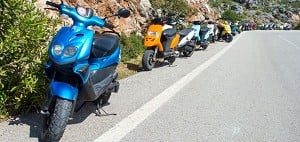
Massimo Cappuccio shares his guide to climbing on Sicily, an increasingly popular Mediterranean climbing destination.
There are nomadic climbers who follow their own internal compass and pursue projects or landscapes that they have not yet seen, and there are those who fall under the spell of trendy spots.
If you are about to choose your next destination and can't wait to leave, then pack your bags and start dreaming, as today the compass points south to Sicily, at the bottom of Italy's boot.
You can get lost on one of the many wild crags where you will not see anyone for days, or enjoy a holiday spirit and the company of other climbers on picture-postcard cliffs, climbing near the sea and enjoying unforgettable sunsets. Sicily can offer all of this and much more.
Sicily is a large island in the middle of the Mediterranean in the far south of Europe, so distant and different from the rest of the continent that it can be considered in all respects an exotic destination.
Rugged mountains, active volcanoes and kilometres of rocky coasts that enclose idyllic beaches, here the nature of each place expresses itself to its fullest potential, giving unique scenarios. Etna, which is the highest active volcano in Europe, at almost 3400 metres in height, dominates all the other Sicilian peaks that extend along the entire Apennine ridge in the north of the island.
To find the steepest walls you have to move west, between the provinces of Palermo and Trapani where you can admire walls with a dolomitic feel, however, there are also big walls for multipitches in the east — just think of the wild Rocche del Crasto on the Nebrodi Mountains, or the ridge of Capo Calava on the Tyrrhenian Sea and the walls of Cava Grande in the great Sicilian canyon.
On the other hand, for single pitch crags, there is an embarrassment of choice and a large area of the island boasts stunning options. To the west are the famous cliffs of Palermo and San Vito Lo Capo, a pilgrimage destination for many climbers for many years now. Then there is the Caltavuturo district in the centre of the island, which represents the most mountainous area and the most suitable during the hot Sicilian summers; then to the east the wild cliffs scattered in the myriad canyons of the Iblei Mountains between the provinces of Syracuse and Ragusa — not forgetting the geometric basalt cliffs on the flanks of Etna.
The island is a rich destination for climbing in all its aspects, mainly sport climbing and then multipitch (both trad and sport) up to four hundred metres. There are also bouldering areas of excellent sandstone, many possibilities for Deep Water Soloing on the rocky coasts and some winter ascents on the steep, icy gullies of Etna.
Thanks to the mild climate and the many opportunities on offer, it is possible to climb all year round.
Sicily has always been a land of conquests and colonisation, but its charm has remained a constant. For almost a century, internationally renowned mountaineers and rock climbers have placed their hands on its rock.
In 1930, the first ascents were made by Fosco Maraini, a character with a strong intellectual and mountaineering charisma, who was the protagonist once again in the immediate postwar period together with the great mountaineer Gino Soldà.
In the early '80s, Alessandro Gogna and Manolo also climbed new walls around Sicily, but the great movement of foreigners took place after the 2000s, when the island really became a climbing destination.
And so in 2012 Adam Ondra established the first 9a in Sicily, and within a decade many top climbers appeared on the island: Neil Gresham climbed the first hard DWS lines in Syracuse and the Americans Tommy Caldwell and Sonnie Trotter established a difficult route in San Vito. But these notable events are really just the tip of the iceberg of the hundreds of visits to Sicily made by climbers from all over the world.
The town of San Vito Lo Capo certainly contributed to making Sicily famous in the world of climbing; here many foreign and Italian bolters have created about a thousand routes, giving life to the first real climbing destination on the island. For the last ten years, the San Vito Climbing Festival has taken place — an international climbing meeting that attracts thousands of climbers from all over the world.
But the beauty and charm of a trip to Sicily lies not only in the wonders of the natural environment, in climbing or in the many other possible outdoor activities. Sicily is a surprising land, rich in history and traditions in which arts and cultures intertwine; the result of millennia of history and dominations that have bequeathed unique gifts to the island. Greeks, Romans, Byzantines, Arabs, Normans and Bourbons have left behind an extraordinary cultural heritage. The historic centres of the main Sicilian cities are open-air museums, and the architectural beauties of churches, noble palaces and monuments make these cities unique.
Go on a climbing holiday and you'll find yourself on a journey through beauty and time.
Sport Climbing:
- San Vito Lo Capo (west Sicily)
- Palermo (west Sicily)
- Caltavuturo (mid Sicily)
- Canicattini Bagni (east Sicily)
- Modica (east Sicily)
Multipitch
- San Vito Lo Capo (west Sicily)
- Palermo (west Sicily)
- Rocche del Crasto (east Sicily)
- Capo Calavà (east Sicily)
Bouldering
- Bosco Scorace (west Sicily)
- Bronte Block (east Sicily)
DWS
- Syracuse (east Sicily)
- San Vito Lo Capo (west Sicily)
Logistics
How to get there
The airports of Palermo, Catania and Trapani are well-connected with national and international flights. The train or other public transport by land is not recommended, as travel and waiting times can be long and unnerving. Once in Sicily, it is essential to rent a car to move freely between locations.
Plan a trip of at least a week to get a taste of Sicily. With only one week, it is better to focus on just one part of the island. If you have two weeks, and this is the ideal solution, then take a tour of the whole island. Most of the cliffs are close enough to the coast, so you can easily think of a circular tour that starts and ends in the same city.
If your passion is multi-pitch routes, choose the western part of Sicily; between San Vito Lo Capo and Palermo there are beautiful long routes.
If you are a boulderer, the best place is Bosco Scorace, west of Sicily.
On the other hand, sport climbers are spoiled for choice — all of Sicily seems made for sport climbing.
Climate
Sicily has a mild climate for most of the year. In winter (from December to March) the temperatures are mild along the coast and cold inland; summer is hot and windy along the coasts, while a torrid heat characterises the inner part of the island. Most of the rainfall is concentrated in late autumn and between winter and early spring.
In winter, despite the fact that in some periods it is very cold, especially in inland mountainous areas, there are frequent long periods of good weather during which it is possible to climb in a shirt and shorts. The summer is not recommended; in the hottest periods such as July and August, temperatures are too hot for climbing.
In any case, even in summer, depending on the slopes or the time of day, it is possible to do a couple of pitches. Spring and autumn are the best seasons, because in addition to the milder temperatures and a good number of hours of light, they also give the possibility of a dip in the sea after a day on the wall.
Guides
"di roccia di sole" - This is the most complete guide, published by Versante sud and describes in detail all the cliffs of the island.
"Sicily" - English guide on the cliffs of western Sicily published by Rockfax
"Bosco Scorace" - The Guide published by Crimpandgoodlife is instead dedicated to bouldering in the woods.
Sicily Rock - German guide to the San Vito area published by Gebro Verlag
"Sport Climbing in Sicily" - Guide to the San Vito area published by Vertical life
Mapo Tapo - Tour operators specialised in climbing trips for groups but also for individual climbers
If you are interested in a climbing photo shoot, you can contact Massimo.
Accommodation Tips
If you go climbing in San Vito Lo Capo, the El Bahira campsite is the ideal place, located right at the base of the long Salinella colgliera where there are hundreds of pitches. Here you can pitch your tent almost under the streets or rent a comfortable house.
If you love bouldering, you must absolutely go to BB Polvere di Stelle, the base camp of all bouldering sites. Here you will find all sorts of services dedicated to climbers: Driving, crash pad rental, a climbing wall, yoga, pole dancing and a jacuzzi, and the food is really good.
If you visit the eastern area of the island then go to Agriturismo La Frescura, you will stay in a typical Sicilian farmhouse surrounded by a citrus grove and you will be close enough to all the cliffs of Syracuse.
Food tips
If you go to Palermo, don't miss a visit to the Vucciria market, one of the historical and cult places of Sicilian street food. Here you can find everything from meat to fish and fried food; a great mix of Mediterranean cuisine with strong Arab influences.
Catania, on the other hand, is the home of roasted meat, and in particular of horse meat. In the historic center around Via Plebiscito there are typical braziers on street corners that cook meat from morning until evening.
In San Vito Lo Capo, you eat a lot of good fish and Trapani specialities such as busiate (typical artisan pasta), one of my favorite places is the restaurant "Lo Stagnone", a real delight for those who love seafood specialities.
In Syracuse, on the other hand, take a trip to the Ortigia market. Numerous restaurants cook fish. If instead you are tempted by the idea of good quality street food, go to Bordieri on the main street by the market, which prepares the richest and tastiest sandwiches in the city.
Crag Cards
Bouldering at Bosco Scorace
Il Bosco is in the hinterland of the province of Trapani, a small natural oasis of hills covered with eucalyptus, oaks and Mediterranean scrub, and of course a lot of rock. A sandstone that is simply perfect, in shape and grain, some have compared it to that of Fontainebleau. There are lines of all difficulties, from 4 to 8A+, boulders of all sizes and also the landings are almost always quite comfortable and safe.
There are three sectors: Bevaio, Rocche Forbici and Spaceship, with a total of 200 lines. There are boulders of all sizes, from the lowest, excellent for beginners, to some highballs for bold climbers. The place is regularly attended, always clean and well tended, and crash pads can be hired. It is also possible to buy the bouldering guide to the area at BB Polvere di Stelle.
DWS
In reality today there are not many spots with established lines, but some locations offer truly spectacular sea walls and superb routes, and there is still great potential to be discovered.
There are essentially four well-developed areas in Sicily: Syracuse with its beautiful caves and high cliffs to the north and south of the city, Giardini Naxos, Terrasini (Palermo) and San Vito Lo Capo. But there are many other areas, less crowded and with great potential.
Syracuse DWS
The Syracuse area is certainly the one that offers more spots and therefore a greater number of lines. South of the city just beyond Capo Murro di Porco are the sectors of Geronimo and Arco. Geronimo is the most popular, with excellent rock, a deep seabed and a height up to about ten metres. There are about ten lines (three traverses and seven climbs) from 6a to 7c. On the arch just to the west there are 4 lines from 5c to 7c +.
On the cliff north of the city, about six kilometres long, there are various possibilities for DWS. Many spots require a boat, others, the most popular and perhaps the most interesting, are easily reachable on foot from the cycle path that runs along the top edge of the cliff. From south to north, the most popular and easily reachable sectors are: Tunis Cave, Rondini Cave and Cannone.
Tunis Cave: ten routes from 6a to 8a.
Grotta delle Rondini: Perhaps one of the most spectacular corners of the cliff, five routes from 6c to 7c on the edges of the cave and on an overhanging pillar, and a 5c route that unexpectedly climbs vertically to the top among the large overhangs.
For more detailed information on the DWS in Syracuse, you can contact the Vertical Climbing Center.
- DESTINATION GUIDE: Sintra 1 Feb, 2023
Guidebook
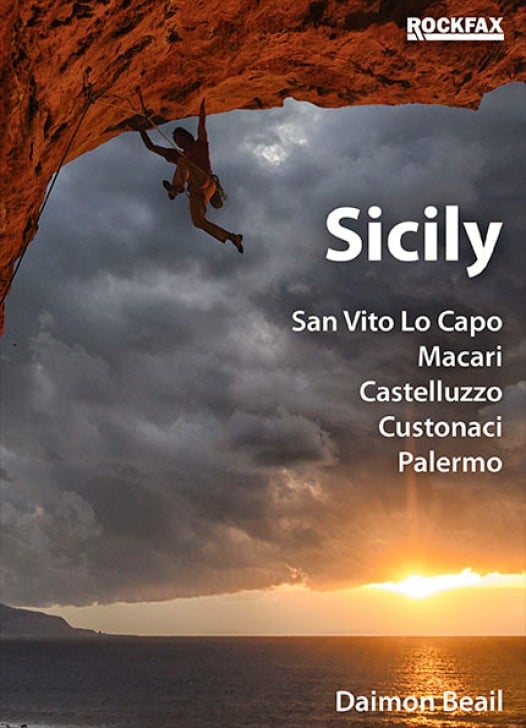
Sicily
Another in the glorious sunny sport climbing destinations in the Mediterranean category. The crags around San Vito and Palermo have more in common with a compact venue like Kalymnos than the more spread out climbing on Mallorca and the Costa Blanca. This book covers everything on the main crags including and is the only book you need.
More info
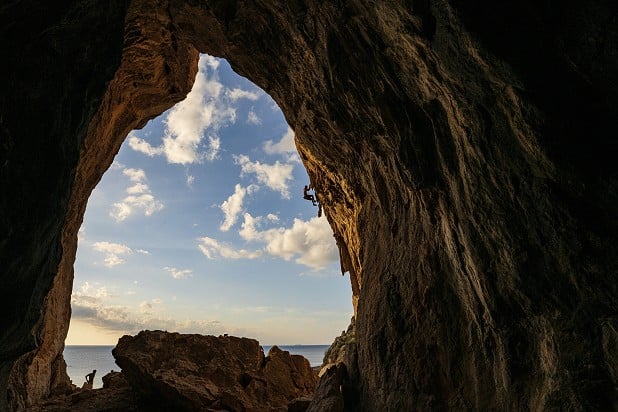
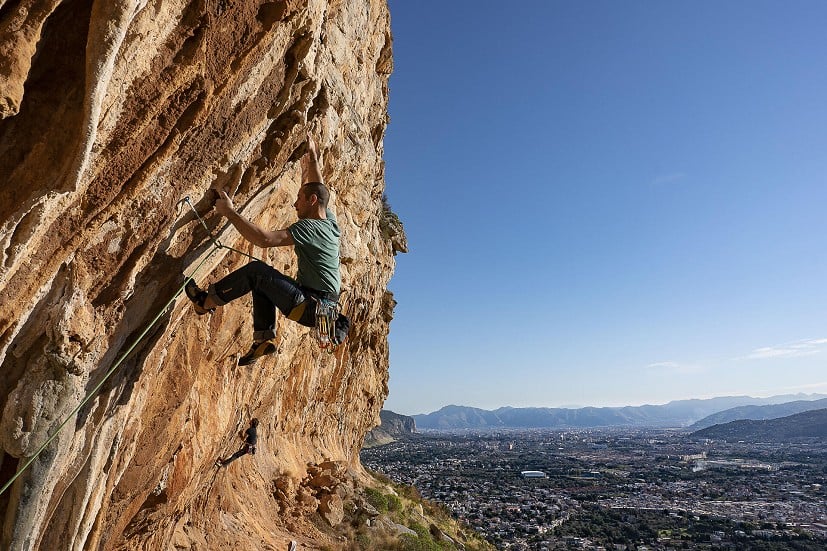
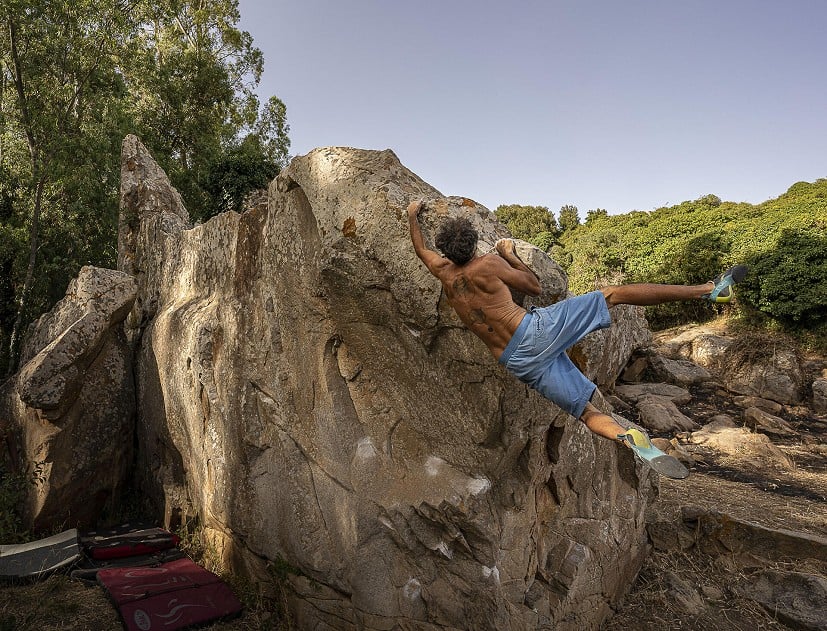
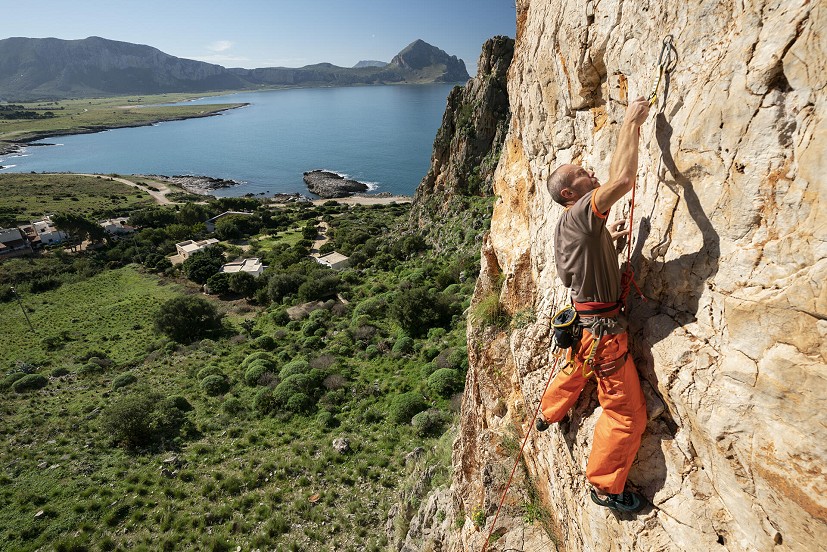
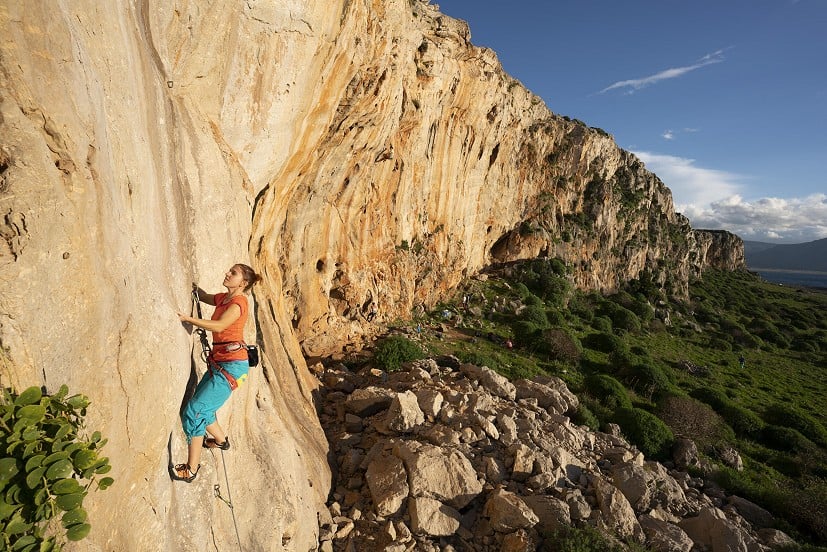
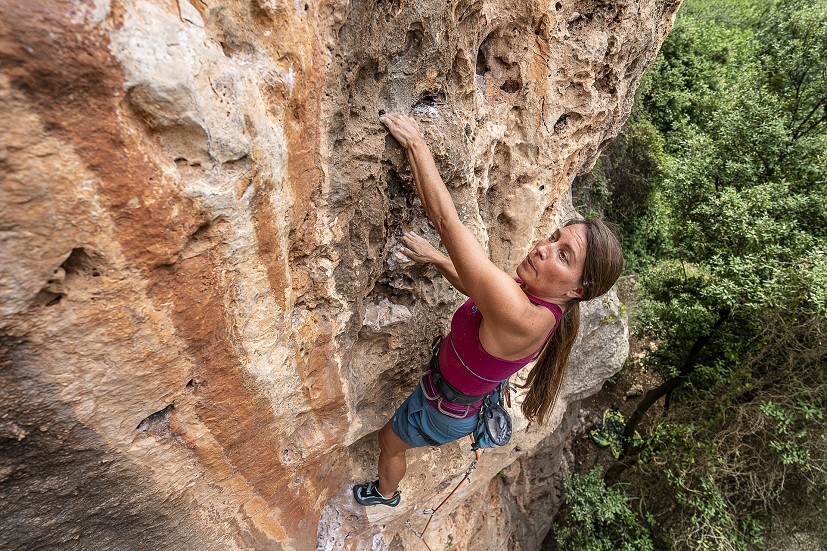
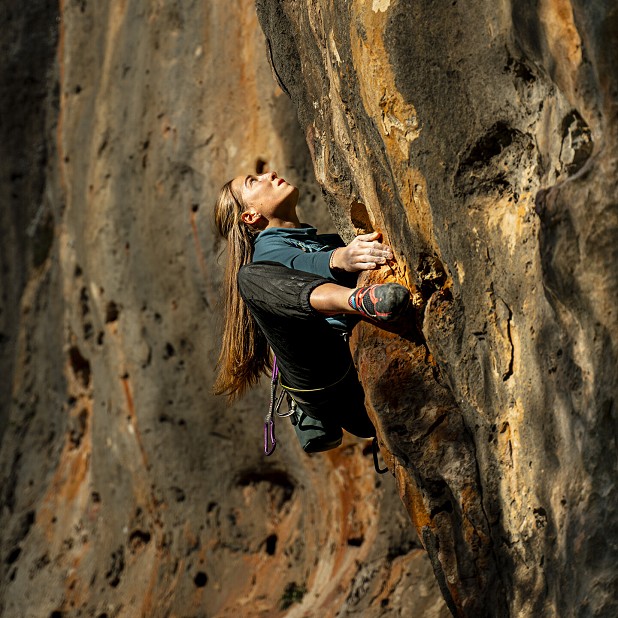
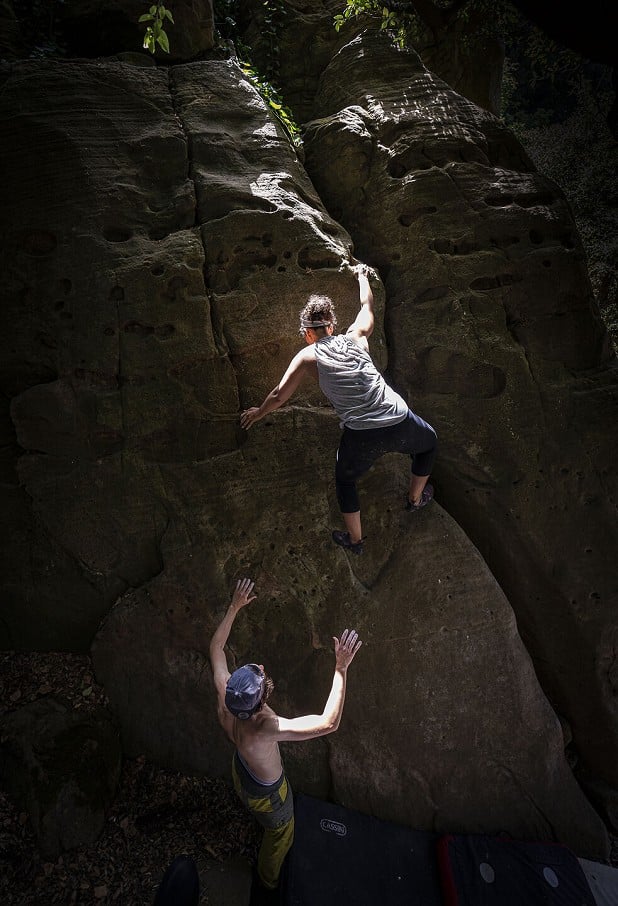
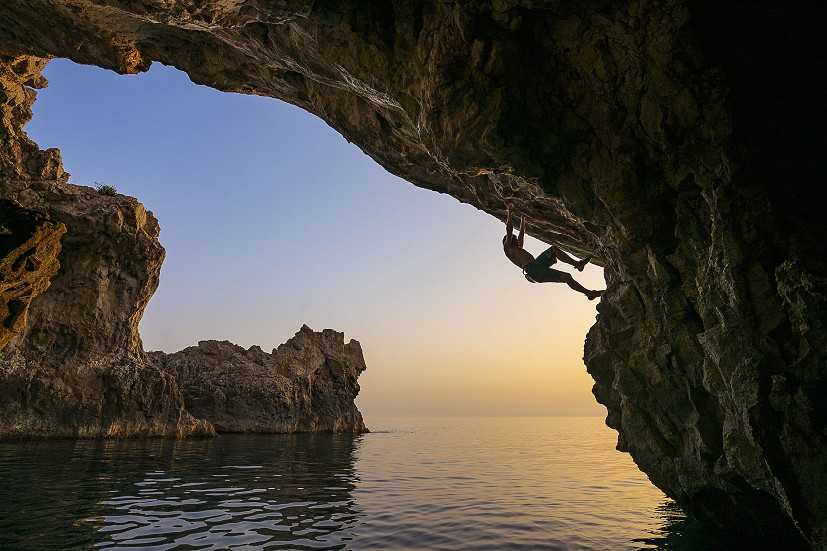
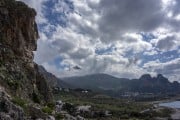

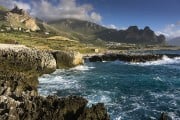


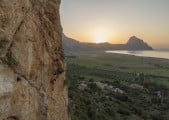
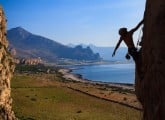

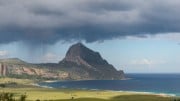





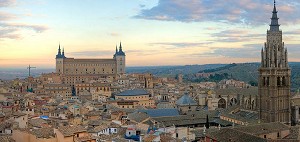

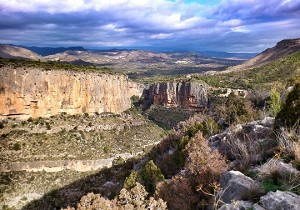

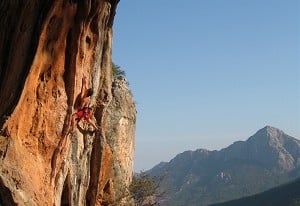

Comments